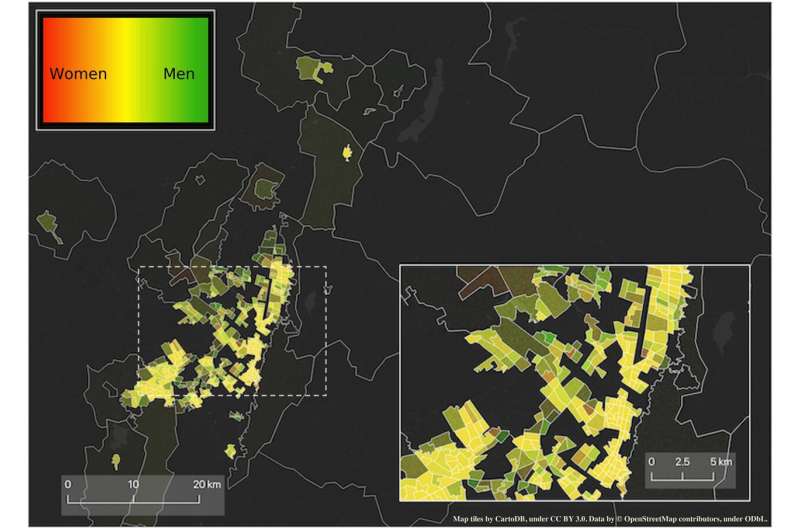Gender, socioeconomic status influence people's patterns of movement within cities

Data from large-scale travel surveys suggest that socioeconomic status may amplify underlying differences in the spatial patterns of how men versus women travel within cities. Mariana Macedo of the University of Exeter, U.K., and colleagues present these findings in the open-access journal PLOS ONE on March 2, 2022.
Human mobility plays a central role in individuals' lives, from daily commutes, to outings with friends, healthcare visits, and more. Factors such as socioeconomic status and gender can influence people's spatial patterns of movement; for instance, research shows that women tend to travel shorter distances within cities than men. However, few studies have considered the combined effects of socioeconomic status and gender.
Macedo and colleagues performed a statistical analysis of data from several large-scale travel surveys conducted in the major metropolitan areas of Medellín and Bogotá in Colombia, as well as São Paulo, Brazil. The surveys included questions about where participants regularly travel within the urban area, the purpose of their travel, and socioeconomic information.
In line with prior studies, the analysis showed that women's travels tended to be concentrated in a smaller number of geographical areas than men's travels. However, socioeconomic status had a bigger statistical effect than gender, with wealthy participants appearing to be more selective about where in the metropolitan area they traveled, middle-class participants having the most diverse mobility patterns, and participants of lower socioeconomic status limiting their exploration, perhaps due to lack of affordable transportation.
Still, within each socioeconomic group, men consistently displayed a greater level of exploration in their travel patterns than women. The gap was most pronounced for the upper class, perhaps because of greater gender inequality in certain professional fields, which impacts commutes. Thus, the researchers conclude, socioeconomic status may magnify underlying gender differences in human mobility patterns.
The authors note that the patterns they observed may not necessarily generalize to other cities; in fact, they observed changes over time that may be related to shifting economic conditions in the cities studied. Future research could explore travel patterns in other cities and incorporate additional factors, such as the traveler's age and profession.
The authors add: "Daily demands and responsibilities shape the mobility of women and men. By studying the mobility of three metropolitan areas in South America, we found that the gender and the socioeconomic status of travelers contribute to the differences in how they move across the urban space."
More information: Macedo M, Lotero L, Cardillo A, Menezes R, Barbosa H (2022) Differences in the spatial landscape of urban mobility: Gender and socioeconomic perspectives. PLoS ONE 17(3): e0260874. doi.org/10.1371/journal.pone.0260874
Journal information: PLoS ONE
Provided by Public Library of Science




















